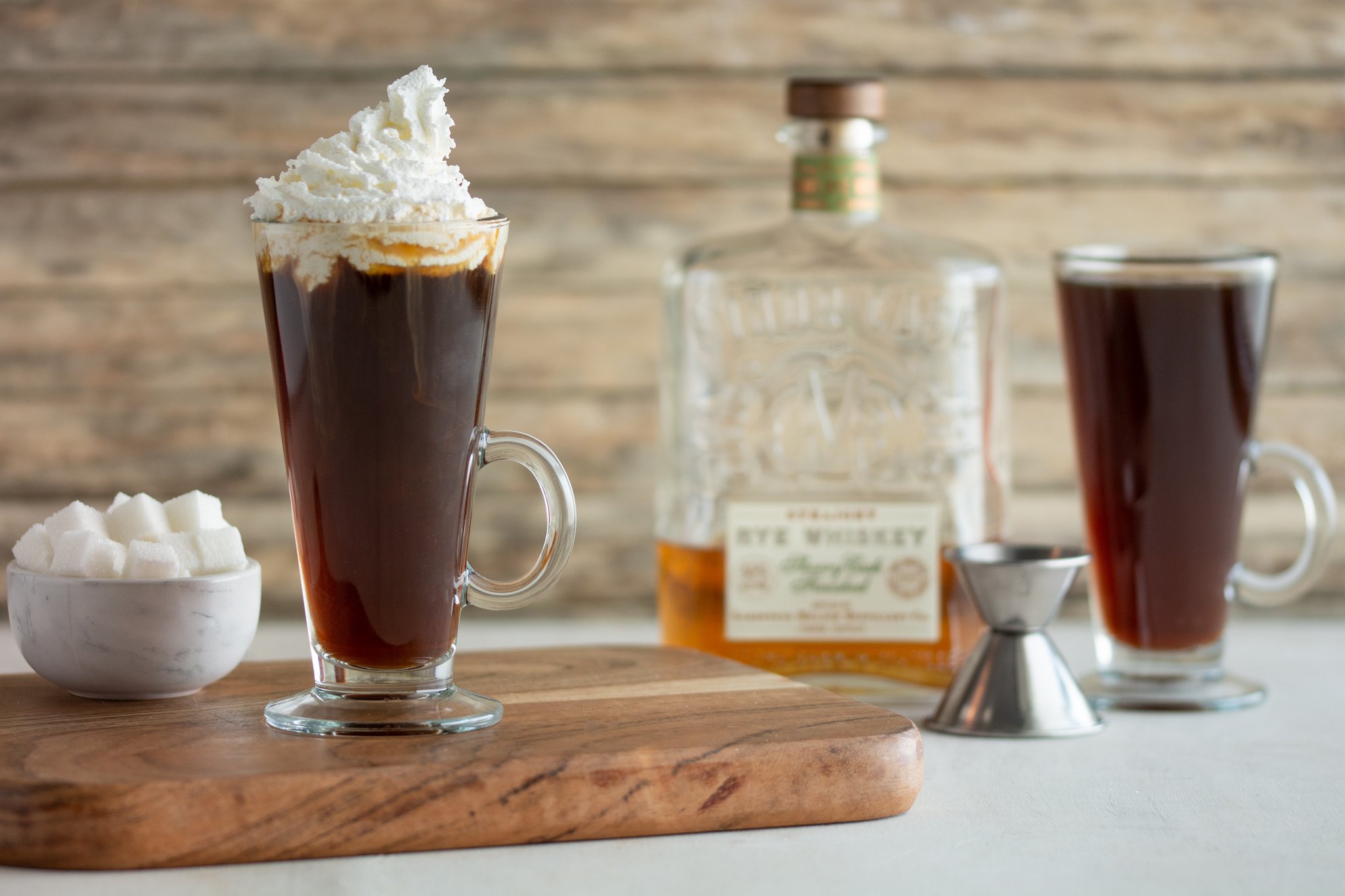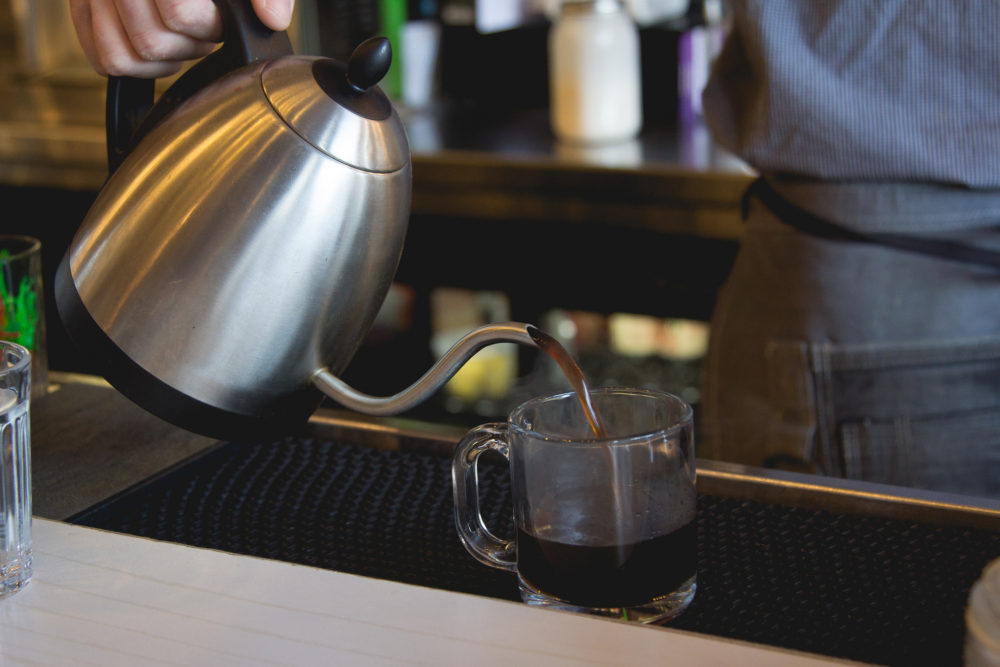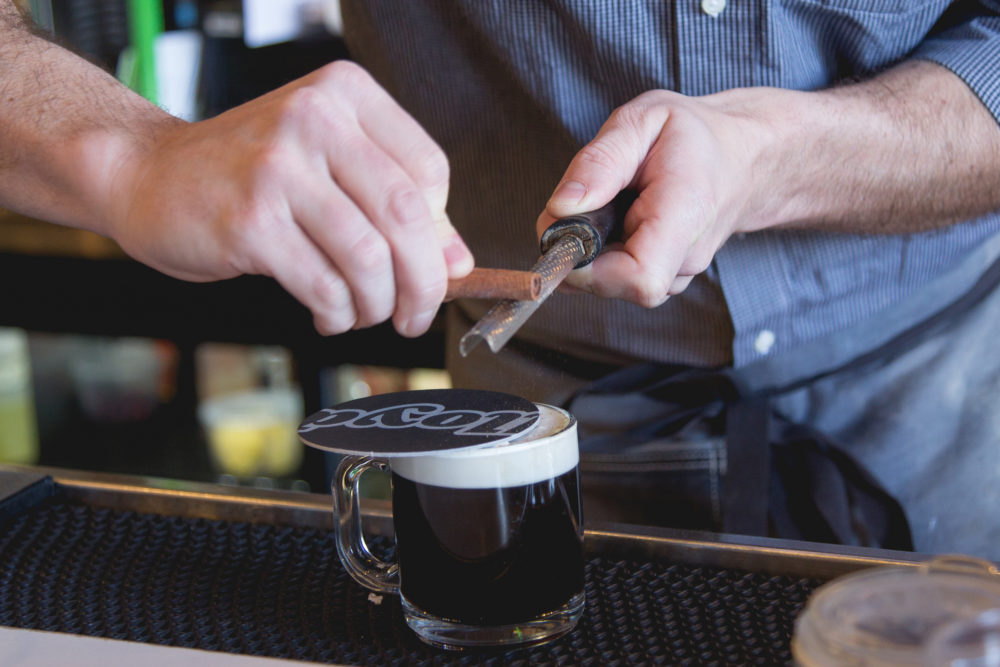

Coffee cocktails ranging from the classic (Irish coffee) to the avant-garde are cropping up on drink menus across the country, and customers, evidently thirsty for a boozy pick-me-up, are ordering them. But with the trend comes elevated industry standards and a better-educated consumer audience. And that means bartenders ought to carefully consider how to bring high-quality coffee behind the bar in an economically viable way.
Not All Beans Are Created Equal
A coffee cocktail is only as good as its weakest component. So if you’re using instant drip to make coffee cocktails, you're already at a disadvantage. Concerning commercial-grade beans, yield is given serious precedence over quality. On commercial coffee plantations, underripe as well as overripe and defective cherries (the fruit that bears coffee beans) make their way to final processing. From there, many commercial-grade coffee beans are roasted with little regard for freshness. They then go on to be pre-ground, further depleting the beans of their volatile aromatics before they ever reach your bar.
In contrast, specialty coffee is grown, harvested, and processed with quality in mind. On the plantation level, workers pick only the ripest red cherries for production. From there, roasters buy beans seasonally and from all over the world to ensure the preeminence and freshness of their product. Any bar equally concerned with quality will choose specialty beans for its cocktails.
The Coffee Disconnect
Once you’ve sourced premium beans, you must be prepared to brew with an equal level of care. But how does a bar pull off consistently good coffee without undue labor and equipment?
At the inaugural Nickel City Drink cocktail festival, Jon Karel of Buffalo Proper and the forthcoming Angelica Tea Room called it a misconception that good coffee is messy, complicated, and expensive to incorporate into a bar program. And he lamented what he described as the disconnect between the disregard some bars show coffee and the lengths those same bars are willing to go to ensure the quality of their other cocktail ingredients.
“We have bars hand cutting crystal clear ice into diamond shapes and creating stencils for bitters, and then you ask for an Irish coffee, and it’s instant drip and Baileys,” he said.

Start With Great Coffee
For his own bar, Karel relies on a simple brewing method that eschews expensive equipment. Using a standard model coffee grinder, Karel processes beans 50 grams at a time, heats water using an electric kettle programmed to 210 degrees, and brews by way of a French press. To keep things hot for service, he pours the freshly brewed coffee into the emptied kettle, lets it come to room temperature, and then turns the kettle back on to keep the coffee at a steady 210 degrees.
The method is easy and inexpensive. But Karel concedes it does have one downside: the last two cups of coffee in the kettle are overcooked and too concentrated for use. You have to toss them. But it’s a loss Karel is willing to swallow.
A second method results in no degradation of quality and, therefore, no loss. It does, however, require an investment in an immersion circulator, which isn’t feasible for many bars. At the Dead Rabbit in New York City, coffee for its famed cocktail program is kept consistently hot sous-vide style. There is no risk of burning and because the coffee is sealed, there is no evaporation. Every last drop is utilized.
 At Lloyd Taco Factory, customers can order a Cafe Gennaro, which marries hot coffee with tequila and Averna.
At Lloyd Taco Factory, customers can order a Cafe Gennaro, which marries hot coffee with tequila and Averna.
Putting Coffee to Work in Cocktails
The fruit-forward, citrusy, and pleasantly bitter flavors of premium coffee work well in many cocktail applications. But if you are new to the coffee cocktail game, Irish coffee perfectly executed (or a riff on Irish coffee) is a sound starting point. At Buffalo Proper, Karel ups the ante on the original with a drizzle of Fernet and freshly grated nutmeg. Nearby at Lloyd Taco Factory, the bar subs tequila for the whiskey and adds Averna to the mix.
Revival of Coffee Liqueur in Cocktails
Of course, if you’re looking to bring coffee behind the bar, you can also go the coffee liqueur route. Karel finds that the natural, drier styles on the market, like St. George NOLA Coffee Liqueur and Lockhouse Revolution Coffee Liqueur, pair elegantly with sweet vermouth and also perform well as a replacement for bitter liqueurs of roughly 15 brix, like Benedictine. He suggests cutting half the vermouth in a standard spec Manhattan or Negroni with coffee liqueur and experimenting from there.
What is your favorite way to use coffee or coffee liqueur in cocktails? Let us know in the comments or on Facebook.



Leave a Comment